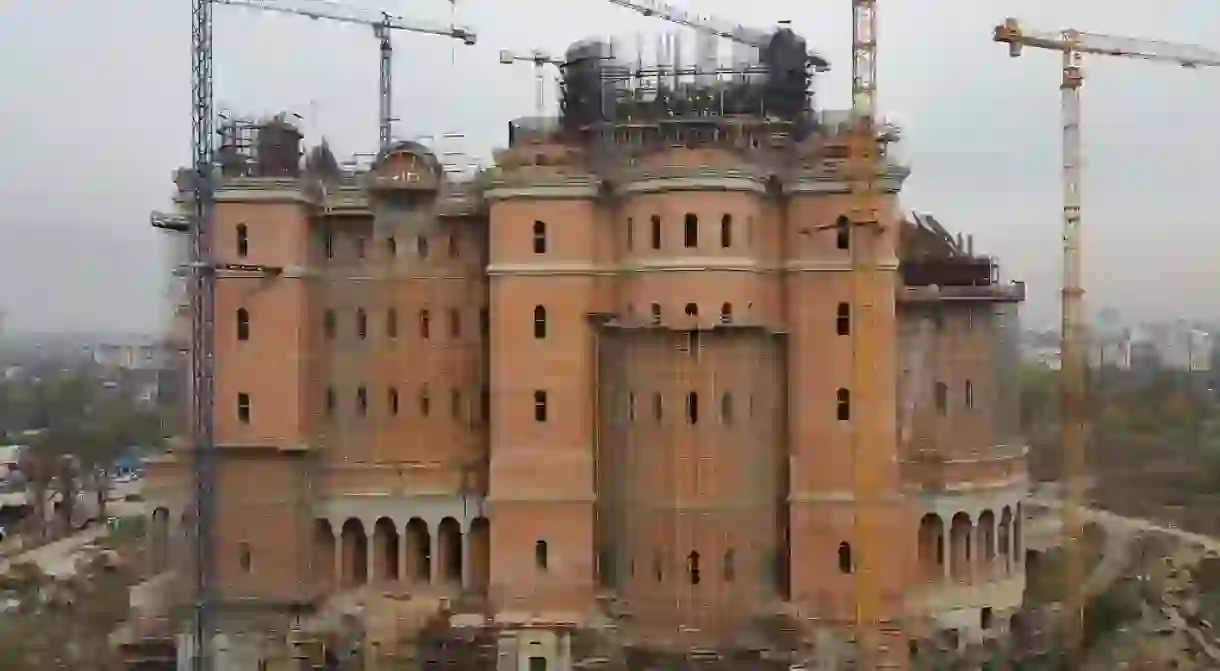A Brief History of Bucharest’s Cathedral for the Salvation of the Romanian People

In a year’s time, Bucharest is expected to have the tallest Christian Orthodox Church in Europe. With its 120-meter-high steeple, 600 windows and enough space to receive 5,000 churchgoers, the building will dwarf all other churches in Romania and join Bucharest’s skyline alongside the Palace of Parliament, the world’s largest administrative building.
Century-old project comes to life
The idea to build a cathedral for the Romanian nation is not a new one. Having emerged during the reign of King Carol (15 March 1881 – 10 October 1914), it was brought up again in the years between the two World Wars and only recently picked up, after the 1989 Romanian revolution that ousted the Communist regime. The foundation stone was laid in 2007 by Daniel, the current Patriarch of the Romanian Orthodox Church, and will serve as the main seat of the church, under the title of Romanian Orthodox Patriarchal Cathedral.
A layer of controversy
The location of the future national cathedral was the first element to stir controversy. Understandably, due to its massive size and symbolism, the right placement in the city centre for the future building took some searching. For 15 years, between 1990 and 2005, three locations were proposed and abandoned with much or less ado. Attempts to build it in the square facing Unirea Shopping Center were dropped after it was proved that the metro station underneath would hinder construction work. The second location, Unirea Boulevard, was scrapped quickly, while Carol Park was abandoned as a site after protests and a lawsuit by the Bucharest mayor hindered the project. The final location, on Dealul Arsenalului, behind the colossus built by Nicolae Ceaușescu, the 1,100-room administrative building so big its lighting costs a year more that of a small city.

The project has also raised criticism for its size, which, in some people’s eyes, is associated with the grandeur of the ages past, and find the building of such a large religious edifice anachronistic. However, the Romanian Patriarchy argues that the current church, located on Mitropoliei Hill, built in the middle of the 17th century, is simply too small to accommodate the crowds of churchgoers that flock to the hill on major holidays. Moreover, the church enjoys wide popular support, with most respondents in polls saying they are in favour of it, provided it is built using church money, not public funds. However, out of the 90 million euros in estimated costs, a large part comes from the state budget.
Impressive numbers
When completed, the Romanian Orthodox Patriarchal Cathedral, dedicated to the Feast of Ascension and Saint Andrew, will be able to welcome 6,000 people, both indoors and in an outdoor space, and will feature a canteen, two hotels and 500 parking spots. A total of 600 people currently work at the site, in three shifts.

And the rest of the figures are equally impressive. With a built surface of 7,200 meters, and, one year before its completion, it has swallowed 100,000 cubic meters of cement. Out of the six church bells, the first to be already set weighs 25 tons. Cast in Innsbruck, Austria, it has a diameter of 3.35 meters, which makes it the biggest moving church bell in the world.
Built by Bacău-based Vanel Exim, Bucharest’s Cathedral for the Salvation of the Romanian People will be inaugurated on 30 November 2018.













